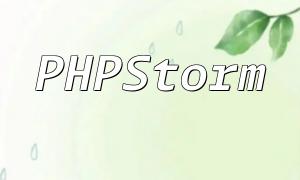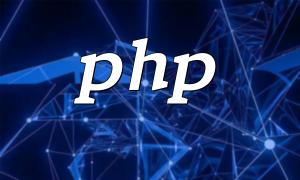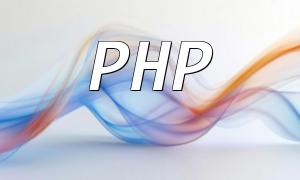Security is crucial in web application development, especially when dealing with sensitive data and user authentication. A thorough understanding of PHP's underlying development principles and related techniques is essential for ensuring application security. This article provides a detailed explanation of core techniques for sensitive data protection and authentication in PHP.
When handling sensitive data, encryption is the first consideration. PHP offers multiple encryption methods, including symmetric algorithms (AES, DES) and asymmetric algorithms (RSA). Symmetric encryption uses the same key for encryption and decryption, while asymmetric encryption uses a pair of keys, one for encryption and one for decryption. Before using any encryption method, ensure the secure generation, management, and storage of keys.
Beyond encryption, securely storing sensitive data is essential. Typically, sensitive information is stored in a database, and passwords are hashed. Hash functions convert data into fixed-length hash values that cannot be reversed. Common PHP hash functions include MD5, SHA1, and SHA256. To enhance password security, use salting, which combines a random salt with the password before hashing and compares the result to the stored hash value.
Cross-Site Scripting (XSS) is a common web security threat, where attackers inject malicious scripts to steal user data or perform unauthorized actions. PHP provides built-in functions and filters, such as htmlspecialchars() and strip_tags(), to escape and sanitize user input, preventing the execution of malicious scripts.
Cross-Site Request Forgery (CSRF) attacks involve attackers disguising requests as legitimate users to execute malicious actions. In PHP, CSRF protection can be implemented by validating the HTTP Referer header, using CSRF tokens, or double-submit cookie verification. These techniques ensure that requests come from legitimate sources and prevent unauthorized operations.
User authentication is the core of application security. PHP supports multiple authentication methods, including Basic Authentication, Digest Authentication, and Token-Based Authentication. Basic Authentication validates credentials directly with the server, Digest Authentication uses encrypted hashes for enhanced security, and Token-Based Authentication verifies user identity with persistent or temporary tokens across requests.
This article covered sensitive data protection and authentication techniques in PHP's underlying development. Encryption and decryption are essential when handling sensitive data, and secure password storage should employ hashing with salting. XSS and CSRF are common web vulnerabilities, and PHP provides effective protection methods. User authentication is central to application security and can be implemented through multiple approaches. Mastering these underlying principles and techniques significantly enhances web application security, safeguarding user data and identity.









